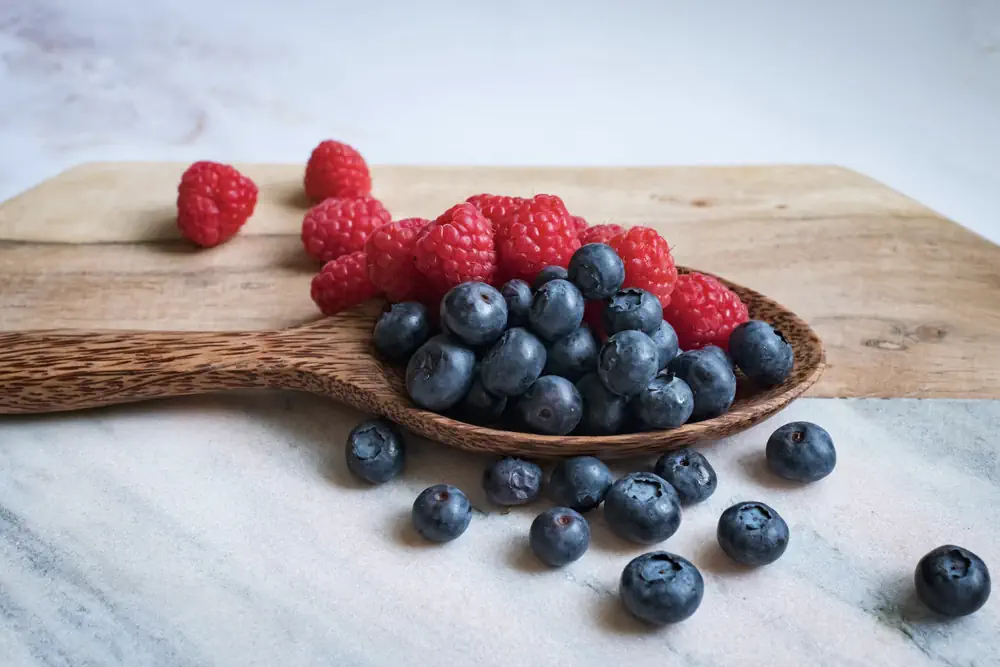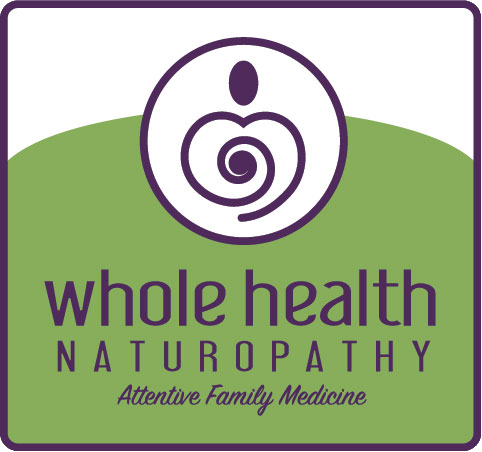Berry season is one of my favorite things about Summer. Growing up in rural southwestern Pennsylvania, I have fond Summer memories of braving “jaggers,” bugs, and snakes for the sweet reward of berries. As a testament to my love of these fruits, seven varieties of berries can be found growing in my yard. June is the start of berry season and is a prime time to harvest and enjoy strawberries. The Farmer’s Almanac designates June’s full moon as the Strawberry Moon because it served as a signal for Native Americans to harvest wild strawberries.
Besides being delicious, berries achieve notoriety for being packed with nutrients, antioxidants (substances that help prevent cell damage in the body) and phytonutrients (naturally occurring compounds found in plants that can help prevent disease). Berries are a low-calorie food, a source of fiber, and are a low glycemic fruit, so they will not quickly raise your blood sugar. Berries are truly a superfood!
Berries are packed with minerals and vitamins. Strawberries are good sources of Vitamin C, manganese, potassium, folate, biotin, copper and Vitamin B6. In addition to these nutrients, blueberries also have an appreciable amount of Vitamin K. Raspberries and blackberries share a similar nutrient profile to strawberries and blueberries. The seeds of all these berries are rare fruit-sources of omega-3 fatty acids which are anti-inflammatory and help to increase protective cholesterol (HDLs). Raspberry seeds contain the highest appreciable amounts of Omega-3 fatty acids. All of these berries contain phytonutrients that help to decrease inflammation and cellular damage and help support tissue integrity in the body.

There have been multiple research studies examining the health potential of berries. Most of the studies used a non-commercially available freeze dried extract of berries, which was estimated to be the equivalent of 3 cups of berries daily. Larger studies are needed to determine the significance of these findings and the effects of fresh berries versus the freeze-dried extract. However, the findings are notable and suggest berries deserve a place on your plate for disease prevention.
One such study, published in the August 2017 journal Nutrients, looked at the anti-inflammatory benefits of strawberries in obese people with osteoarthritis of the knee that was confirmed by x-ray. Osteoarthritis is the most common type of arthritis and risk factors include obesity and advanced age. The disease process causes loss of cartilage in the joint, pain, and reduction in mobility. After 12 weeks those who received daily 50 grams of a freeze-dried strawberry drink — compared to those who did not receive the drink — had lower blood levels of inflammatory markers associated with progression of osteoarthritis and reported less pain.
Although this study had a small number of participants, it is noteworthy particularly because it was a double-blind placebo controlled study, so neither researchers nor participants knew who consumed the strawberry drink. Dietary strawberries may have significant pain relieving and anti-inflammatory effects in obese adults with osteoarthritis. Various other studies on strawberries, blueberries and mixtures of berries have shown potential health benefits to improve cholesterol parameters, improve heart health, and improve memory.
For optimal nutrient content and health benefits, look for berries that are grown locally without pesticides. The Pesticide Data Program administered by the U.S. Department of Agriculture (USDA) tests samples of fruits and vegetables sourced from around the country — as well as imported produce — for pesticide residue. For the past several years, conventionally grown strawberries have had high levels of detectable pesticide residue. In 2015, the USDA’s test found that 99% of conventionally grown strawberries had at least one detectable pesticide residue, and 20% of strawberry samples had at least 10 detectable pesticide residues.
Some pesticides residues are fairly benign while others have potential to contribute to reproductive impairment, hormone disruption, neurological problems and cancer. While certified organic does not guarantee zero pesticide residue the odds are much lower. In 2015, the USDA found 5,012 out 5,022 organic strawberry samples to be pesticide residue free. I particularly enjoy going to farmers markets and talking to the farmers that have grown the food. This affords the opportunity to discuss their growing practices and pest management strategies. We are fortunate to have a variety of locally grown berries, so keep an eye out for the 2023 edition of the Community Farm Land Trust’s yearly free publication The Fresh From the Farm Guide to find bounties of berries and other locally grown food.

